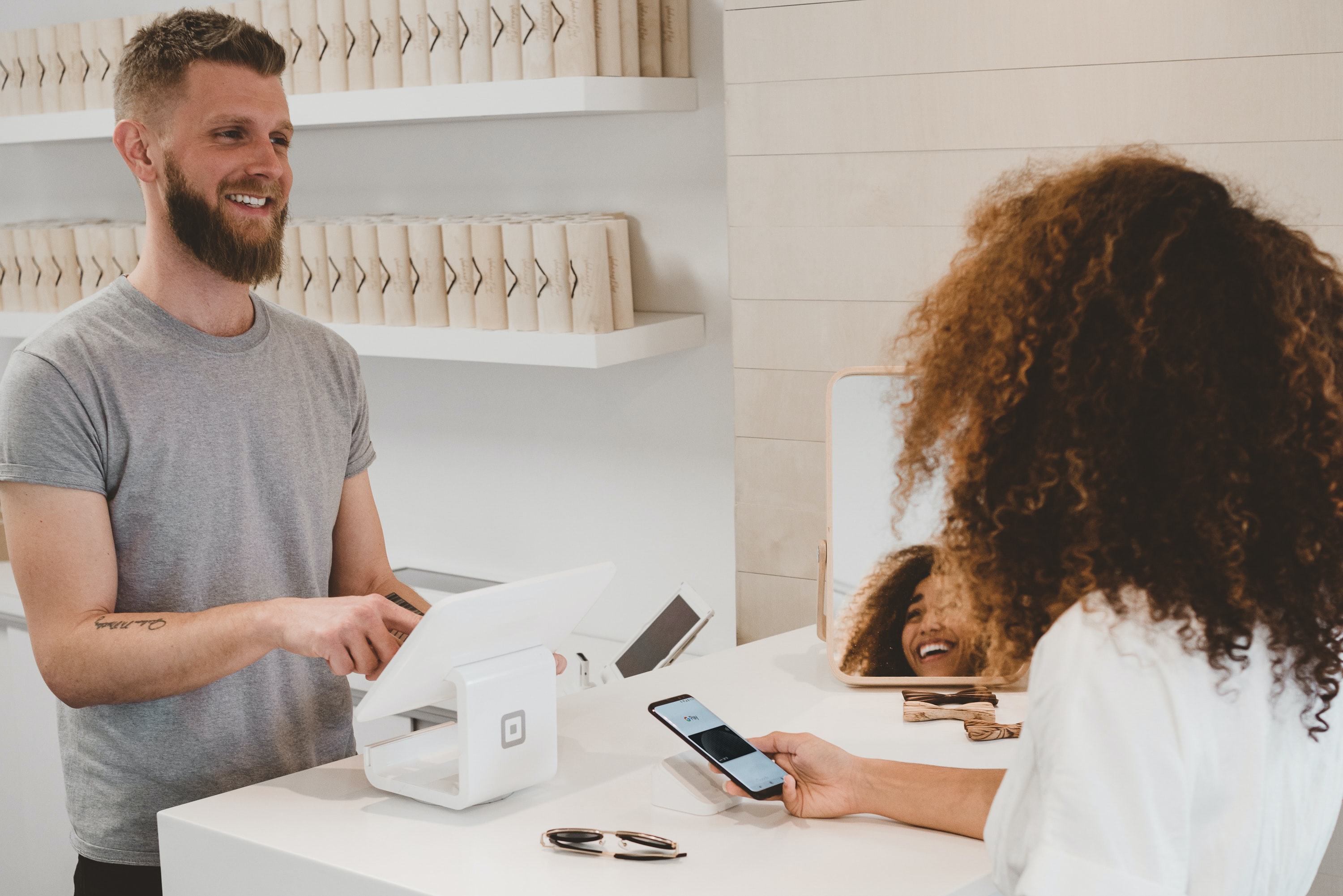
Increasingly acclaimed by consumers, the Mobile wallet is at the heart of our interactions with the physical world (shops, transport, leisure...)
These mobile applications bring new services that are very useful to make our daily lives easier. They are shaping the business of tomorrow. The business environment is becoming more connected, more transparent, more secure, and even more unified! In-store experiences will be in harmony with their customers.
For brands and retailers, e-wallets offer a new privileged engagement channel. Indeed, these applications complement an existing mobile strategy. In addition, they open up new perspectives for brands that want to build stronger relationships with their customers, without having to develop a mobile app.
The origins of the mobile wallet
The big American firms Google and Apple are launching on the mobile wallet market at the beginning of the 2010s:
- in 2011, Google launched Google Wallet;
- In 2012, Apple launched Passbook.
These mobile solutions allow their users to group their tickets, movie tickets, reservations and loyalty cards within the same application. From the moment they were launched, the promise was strong. However, the ecosystem is not yet completely ready...
What is a mobile wallet application?
Mobile wallet applications, otherwise called e-wallet, aim to digitize our good old wallet. Based on this principle, your e-wallet includes:
- your credit and debit cards;
- your loyalty cards;
- gift cards, etc.
However, it is necessary to look further ahead. Indeed, the derived solutions are numerous. Thus, your mobile wallet can contain a host of other solutions:
- reservations (flight/train ticket, concert, car rental, etc.);
- access badges (hotel room, company, etc.);
- keys (rental of an apartment, car or house, etc.).
Mobile wallet adoption: mobile payment
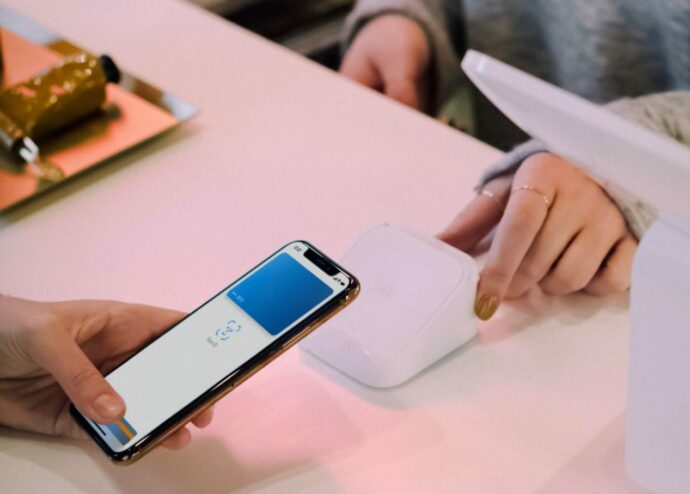
Introduced in 2014, the Apple Pay service now has more than 441 million users worldwide. In the United States, it is estimated that the number of new mobile wallet users will increase by around 6.5 million each year between 2021 and 2025.
In 2018, Google Pay was born from the merger between Android Pay and Google Wallet. For its part, the Google Pay application would have around 100 million users with rapidly accelerating growth.
Apple Wallet: new uses in our daily lives
Some American states, such as Arizona, Connecticut, Georgia, or Iowa, offer their residents to integrate their identity card and driver's license into Apple's mobile wallet. The announcement was made by Apple at the beginning of September 2021. Arizona and Georgia will be the first states to propose this solution. Other states will follow very quickly.
Thanks to the deployment of iOS 15, the Apple Wallet now offers to unlock access to certain equipped buildings. Silverstein Properties announced that their employee's access badge would be integrated into their Apple Wallet, via their iPhone or Apple Watch. Other offices in New York, Philadelphia and Los Angeles will be equipped in the coming months.
The Hyatt hotel chain recently communicated on the deployment of this new technology to replace the keys to its rooms in 6 of its American hotels.
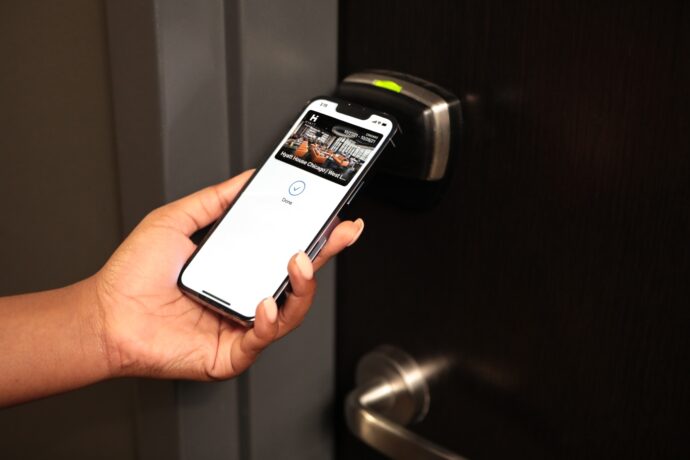
The German firm BMW has developed BMW Digital Key. Up to 5 additional people can be associated with a vehicle equipped with the Digital Key solution.
All these new uses will certainly reinforce the supremacy of major players and encourage adoption by its users in all areas, including shopping.
The global e-wallet market
Market leaders: Apple Wallet and Google Pay
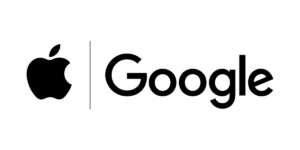
In Europe, the Apple Wallet and Google Pay solutions are the most used, because they are the best known.
Recently renamed CARDS in France, the Apple wallet application is available natively on iPhone, iPad and Apple Watch. For its part, Google Pay is not installed natively on all Android devices. Thus, Google offers to download Google Pay.
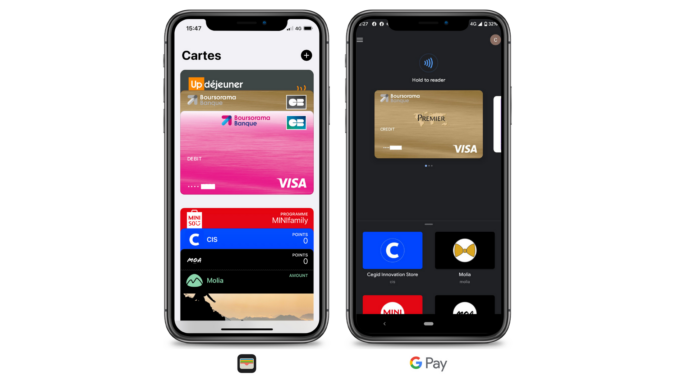
The other players in the mobile wallet
Many players offer functionalities similar to the e-wallet.
Around the world, some web and mobile applications integrate wallet features only valid in a network of brands (Uniqlo, H&M or Nike, etc.).
In China, WeChat is deploying by offering loyalty “mini-programs”.
Mobile Wallet: the players in commerce & loyalty
1. Generic mobile wallets
Like Apple Wallet or Google Pay, these generic mobile wallet solutions make it possible to dematerialize and store several types of passes:
- credit cards;
- your loyalty cards;
- membership cards;
- the keys to your vehicle;
- etc.
2 - Proprietary wallet applications
These applications developed by brands integrate the functionalities of a wallet. However, they can only be used within the brand's network, like Uniqlo, H&M or Nike.
This path is often preferred by major retailers. It is complementary to the generic wallet solutions offered by Apple & Google.
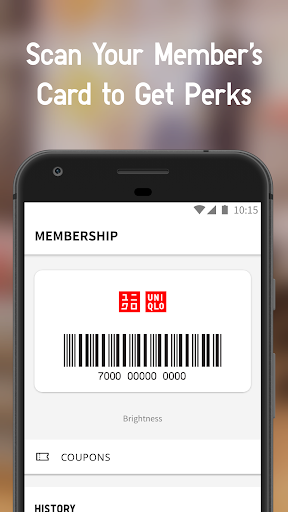
3. Loyalty card marketplace applications
These applications allow their users to scan and store their existing loyalty cards in a single application, like Stocard or Fidme.
Les Loyalty Card Marketplace fully control the customer relationship. For comparison, Apple Wallet or Google Pay applications allow this white label management.
The passes at the center of the mobile wallet
What is a pass in the mobile wallet?
The various dematerialized media that we can download and save in our mobile wallet applications are often called “passes”.
These passes can be downloaded by users in a variety of ways:
- by email;
- by SMS;
- from a website or an application;
- by scanning a QR code;
- thanks to the NFC tag placed in a physical place.
[caption id="attachment_955" align="aligncenter” width="690"]
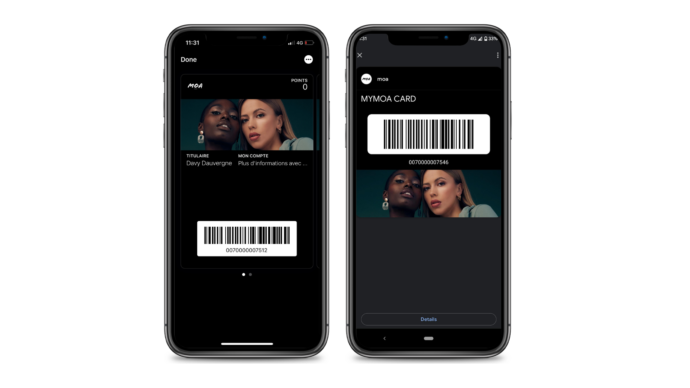
MOA loyalty card in the Apple Cards app on the left & Andoid Pay on the right [/caption]
Thanks to the mobile wallet, the physical world is more easily interconnected with the digital world, a universe that we all now use on a daily basis. THEadvantage number 1 of these mobile wallet applications is to facilitate the user experience.
Thanks to these technologies, users no longer need to search for their various maps. They are now accessible in real time and can be updated automatically.
What types of passes can we see in mobile wallet applications?
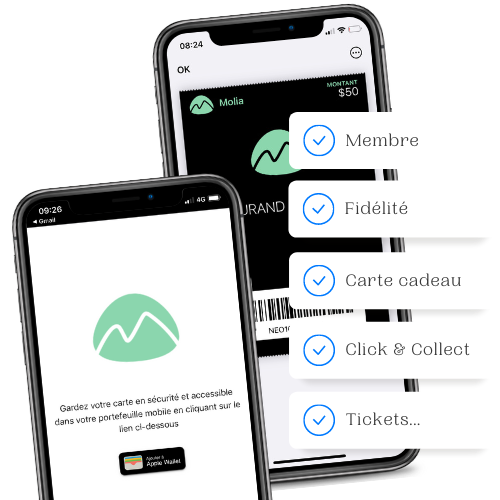
- credit and debit cards;
- membership cards;
- Your loyalty cards;
- discount coupons;
- Shopping vouchers;
- Omnichannel web orders (e-reservation, click & collect);
- Gift cards (with the possibility to see the remaining credit);
- Bookings;
- Events (private sales, invitations to openings, etc.).
Updating mobile wallet passes
It's practical! Information is updated dynamically on the passes. It's instant and very useful to know in real time the balance of a gift card, the number of points on a loyalty card or the status of your order to be picked up in store.
Push notifications
To simplify the user journey, push notifications can be issued on the screens of iOS devices. The benefits of these notifications are multiple:
- be alerted to a new point balance;
- warn the user that their voucher is about to expire;
- Remind the user to use their loyalty card when approaching a cash register in a physical store.
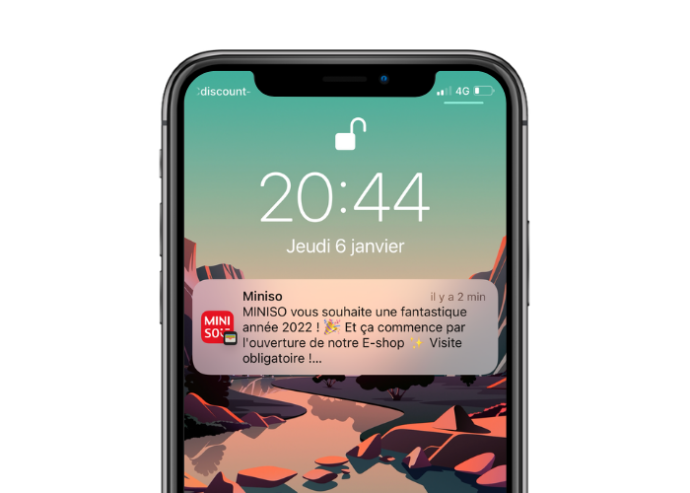
At the time of writing, Android has limited the sending of push notifications.
Passes and NFC
These passes can very easily be identified by fixed and mobile payment systems, by scanning a 1D or 2D code on the card, or by using NFC technology.
NFC technology is increasingly being deployed for its ease of use and its democratization through contactless payment.
Mobile Wallet: commercial opportunities?
- The brand does not have to develop -or maintain- a native application.
- Replace physical devices in stores (loyalty cards, gift cards, vouchers, etc.).
- Simplify the omnichannel shopping journey for customers by offering them a pass linked to their click and collect order.
- Boost store traffic.
- Improve customer identification and knowledge.
- Improving customer satisfaction.
The mobile wallet solution developed by Neostore allows you to easily handle this engagement channel.


.png)
.png)